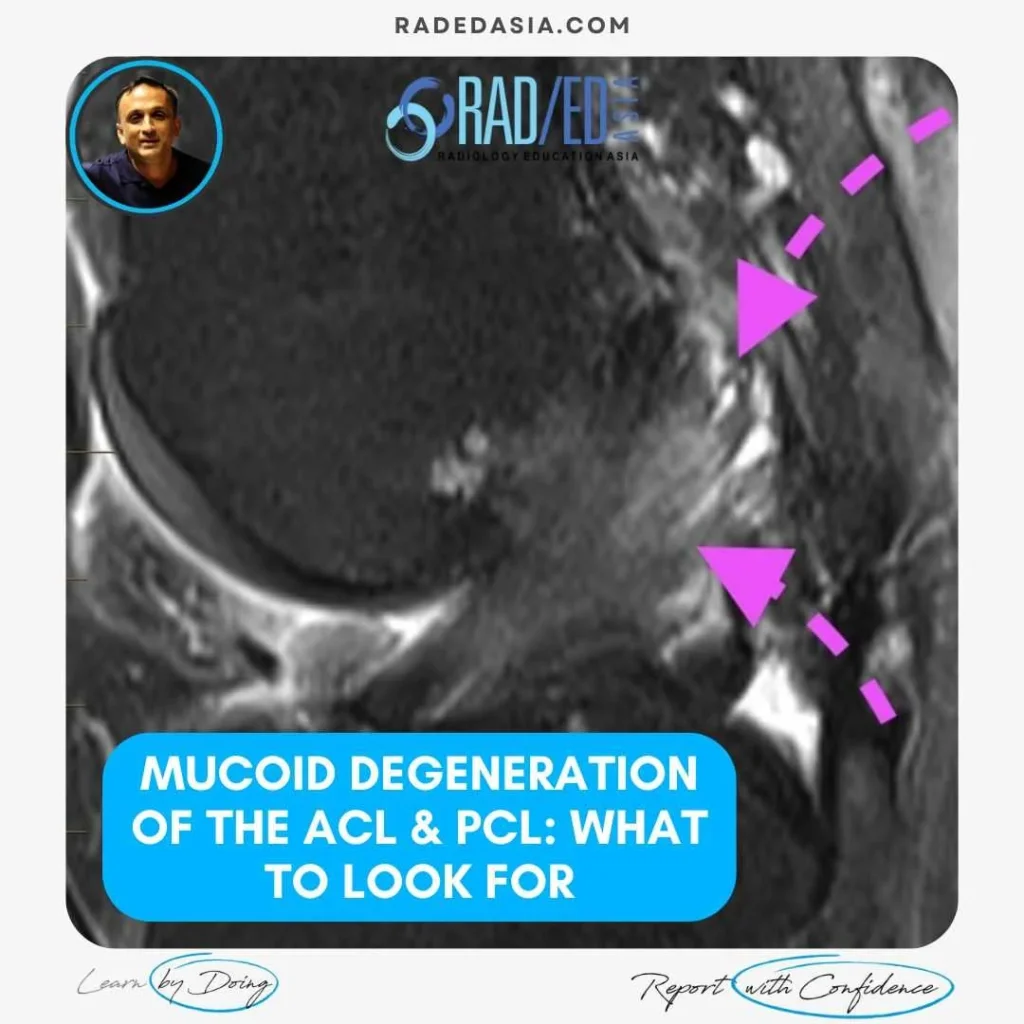
This site is intended for Medical Professions only. Use of this site is governed by our Terms of Service and Privacy Statement which can be found by clicking on the links. Please accept before proceeding to the website.

Mucoid degeneration can affect both the anterior cruciate ligament (ACL) and posterior cruciate ligament (PCL). Mucoid degeneration is often confused with ACL tears, and this post looks at the main MRI features of ACL and PCL mucoid degeneration that will help to differentiate from tears.
WHAT ARE THE FINDINGS?
SUMMARY:
This is a characteristic appearance of ACL mucoid degeneration. Look for,

Stay tuned on new
Mini-Fellowships launches and learnings
This site is intended for Medical Professions only. Use of this site is governed by our Terms of Service and Privacy Statement which can be found by clicking on the links. Please accept before proceeding to the website.